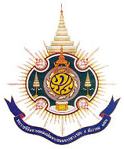 Introduction.
Introduction.
Contact with the People.
The Royal Projects.
List of Royal Projects.
The Royal Activities Slide Show
Suan Chitralada Projects
Magsaysay Award for Royal Project
Other Project

Guinness Book of Records

 "The Golden Jubilee of His Majesty"
"The Golden Jubilee of His Majesty"

The King Who Gives
 Her Majesty the Queen of Thailand
Her Majesty the Queen of Thailand
SUPPORT, A New Life for old Skills
Bangsai and Crafts Training Centre
First Support Museum of Thailand
|

With His Majesty's advice the tribal people grow winter flowers in the place of opium poppy
- Hundreds of thousands of flowes, of every colour of the rainbow and in almost every
shape and form, are waiting to be seen and enjoyed by tourists visiting the terraced slopes of high mountains surrounding Huey Tung Jor, a big
valley of about 220 square kilometers in area in the northern city of Chiang Mai.
- Cultivation of these flowering plants, most of them from the temperate zones started in the year 1972 at the initiative
of His Majesty the King who graciously donated a large sum of money for the implementation of a research project
on the cultivation of flowering plants in the Chiang Mai area. The research work was carried out under the Royal Hill-Tribe Development Programme,
which has as its main objectives the raising of the standards of living of the hill-tribe people and to persuade them to produce other cash crops in
place of opium and at the same time to abandon their age-old practice of slash and burn cultivation of their crops, mainly opium.
- His Majesty the King, during his frequent visit to the northern region of the country, noticed that a large area of
forests had been destroyed and water sources in the region greatly damaged mainly through opium cultivation. With almost 80 per cent of the Thai people working in the
agricultural sector, measures have to be instituted for the immediate solution of these problems and for these reasons the Hill-Tribe Development Programme
was initiated to be implemented by the Forestry Department in cooperation with other voluntary groups to be set up.
- The Forestry Department started its Royal Water Sources Development project in the year 1975 and work has progressed very satisfactority.
At present there are 34 units in operation in four northern provinces namely Chiang Mai,
Phrae, Nan and Chiang Rai.
- The research project, under the direction of Dr. Pisit Voraurai, a professor at Kasetsart Faculty, University of Chiang Mai,
started with a demonstration plot near the Puping Rajnives Palace in Chiang Mai province. Work began with experiments on the cultivation of the cymbedium species of
orchids with the local name of Karekaron. The results of the experiments were satisfactory and a cymbedium variety was ordered from France for cross breeding with
the local variety. From the demonstration plot new varieties of cymbedium and also of gladiolus were obtained for further propagation by the hill-tribe people in the area.
- The project received full support of the Forestry Department, the United Nations Thai Programme for
Drug Abuse Control and the United States Department of Agriculture with the result that extensive experiments in
these fields were carried out and the demonstration area moved to Huey Tung Jor. Further experiments were
carried out to produce morespecies and varieties of flowering plants to supply cut flowers, seeds, bulbs and plants.
- Work on these projects cover research on suitable conditions for their cultivation and also on marketing to ensure that
people in the area could get adequate return from their work so that they could turn away from their opium growing business.
- On the 21 villages in the Huey Tung Jor area, 11 of them are inhabited by about 1500 Lahu and Karen hilltribe
people. In the valley, there are 10 Thai villages with a total population of about 1200. Over the whole area
when in the old days mostly opuim was cultivated, there could now be seen many species of flowering plants
such as orchids, carnation, tulip, gladiolus, iris, snapdragon, lady's slipper and dahlia and many other beautiful temperate
zone flowering plants. The high degree of success of the project could be seen from the fact that the United
Nations University has selected Huey Tung Jor as the site of a demonstration centre for the cultivation of highland crops
and plants and for the study of the effects on the inhabitants of the lowlands in the area.
- Beginning in 1978, the project authorities were able to persuade the hill-tribe people to start the cultivation of
flowering plants in their own demonstration plots and earn good income from them with the help of technicians giving
them expert advice and supplying them with seeds, insecticides and fertilisers. Work had since then progressed
to the stage where the hill-tribe people are able and willing to join together working on larger cultivation
areas. A target has been set for the cultivation of flowering plants over some 20 rais of hill slopes for next year and it
is expected that about 20 families of hill-tribe people will be engaged in flowering plants cultivation with an annual
income of not less than 20,000 baht per family.
- During 1979, cultivation of flowering plants by the people in the areas is expected to produce more than 40 species
and varieties of attractive flowers and the total income from the sale of the plants, seeds and bulbs and cut flowers
is estimated at not less than 10 million baht annually over the next two or three years.
|
|
 Introduction.
Introduction.




